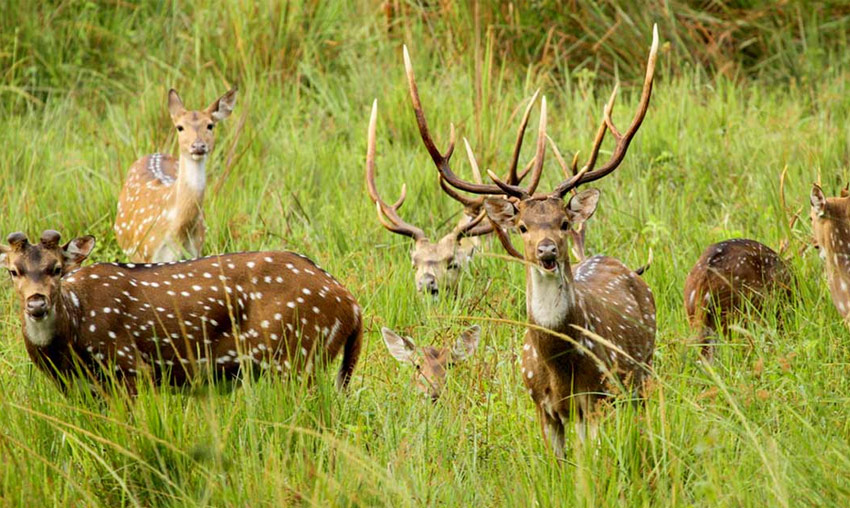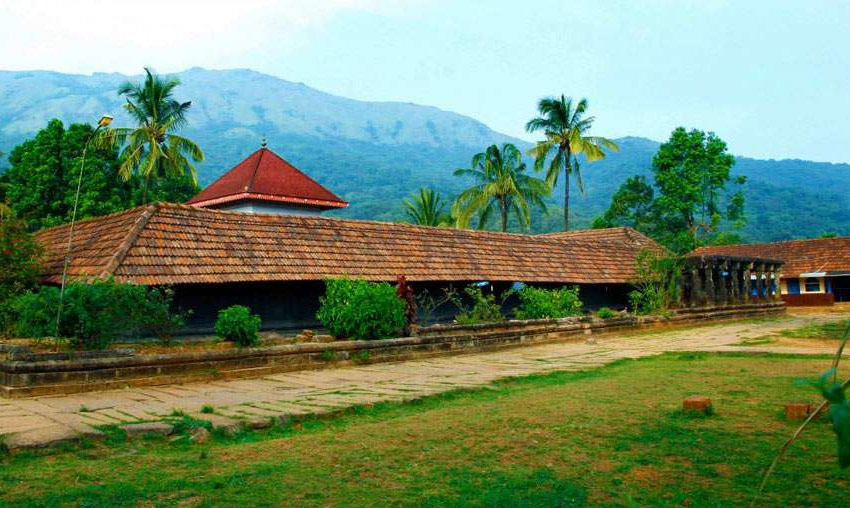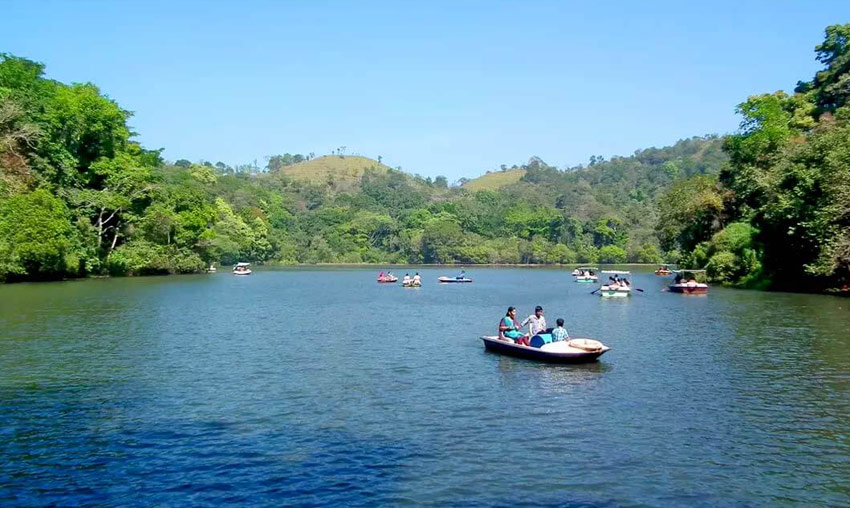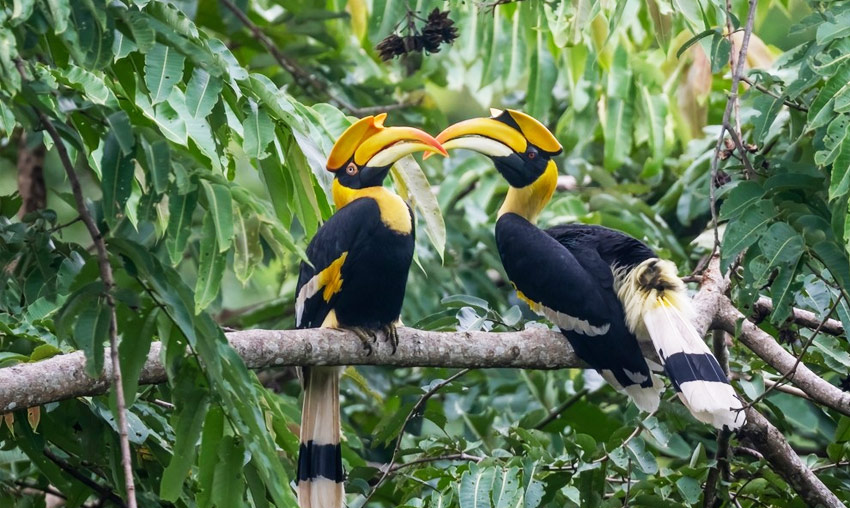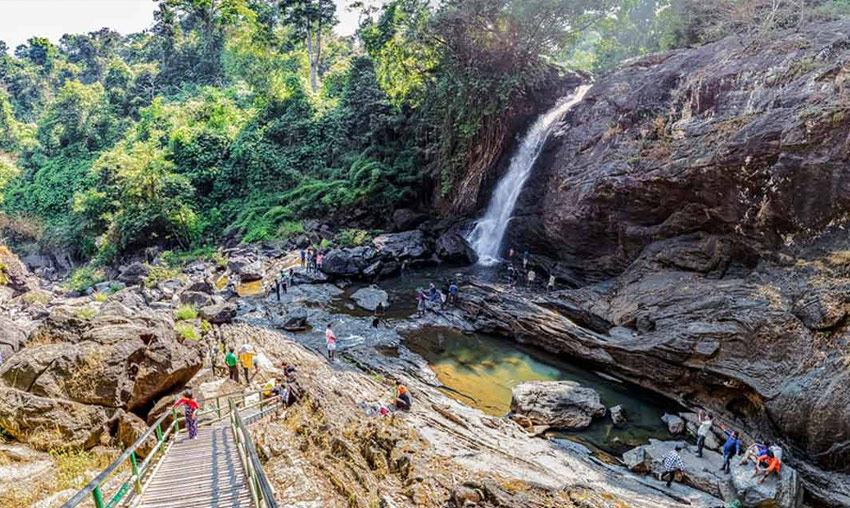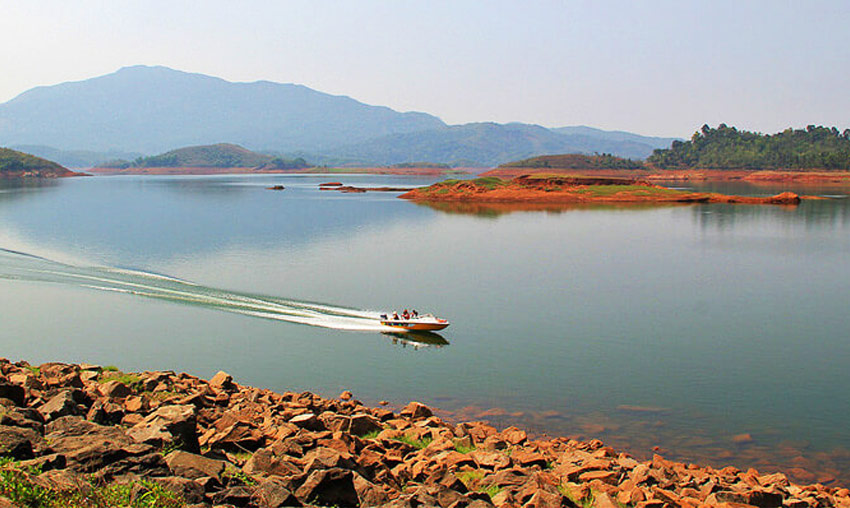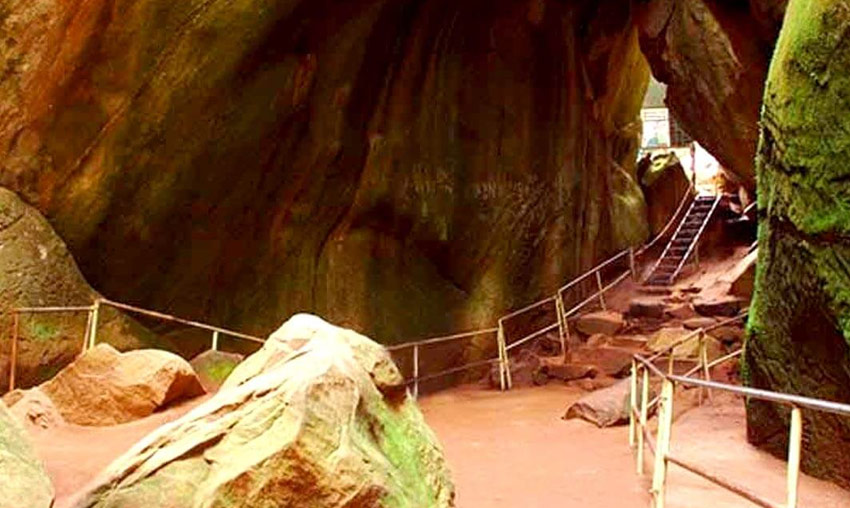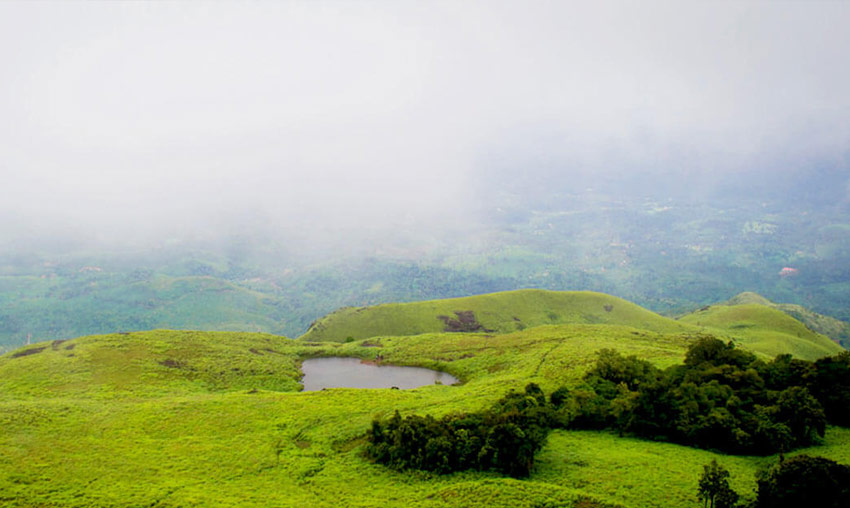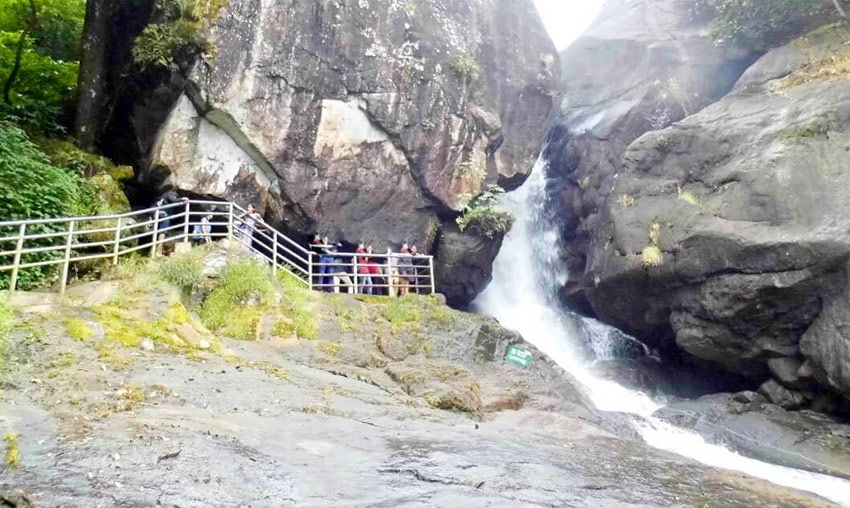Wayanad Wildlife Sanctuary (Timings, History, Entry Fee, Images & Information)
Four ranges make up the Wayanad Wildlife Sanctuary, with Muthanga being one of them. Muthanga Wildlife Sanctuary, mostly a rainforest, is one of peninsular India’s most biologically diverse regions. There are semi-evergreen forests and both dry and wet deciduous trees in this ecotourism destination.
Muthanga Wildlife Sanctuary shares much of the Western Ghats and its heavily forested Malabar Hills with the Nilgiri Bioreserve. This region of the Wayanad Wildlife Sanctuary is well-known for its elephant population, but it also provides opportunities to see a variety of other wild creatures.
But luck plays a big part in sightings, so it’s not assured that one will get lucky and spot something on the first expedition. Because of this, the majority of wildlife enthusiasts would rather spend a few days in the vicinity of the reserve and try their luck on safaris every morning and afternoon.
Muthanga Wildlife Sanctuary Timings & Entry Fee
One of the few areas in the nation permitted to remain open all year round is the Wayanad Wildlife Sanctuary’s Muthanga range. The animal refuge exhibits diverse features during the different seasons. If you are primarily concerned about sightings, come here during the summer. The intense heat that strikes the woodlands in April and May pulls most of the wild animals out to water bodies, where they are visible to viewers sitting in their safari jeeps, breathing heavily.
Unfortunately, some people find this heat to be nearly intolerable, which makes it difficult to withstand the jeep safaris, particularly during the afternoon hours. It is well known that summertime brings on forest fires in the woods.
Another avoidable period is the monsoon (July to September), when visibility is poor and the Muthanga Wildlife Sanctuary is slushy, making it uncomfortable and useless to go in search of wild creatures.
It’s pleasant to visit the woodland from October through March throughout the winter and spring seasons. Even with poor sightings, birdwatchers will enjoy seeing a variety of native and migratory species in the forest. Rich greenery and beautiful blooms are also brought about by the favorable weather.
Walking tourists can access the sanctuary from 7 AM until 5 PM, regardless of the season. You can only visit between the hours of 7 AM and 10 AM and again between 3 PM and 4:30 PM if you choose to go on a safari.
Adult Indians must pay INR 20, while minors under 12 and students who have proper identification must pay INR 10. The fee for foreigners is INR 110 per person. Should you choose to bring your own camera, the fees are INR 25 for still photos and INR 150 for videos.
Parking for cars will set you back INR 50 if you are driving down to Muthanga. Heavy vehicles, such as buses, are billed INR 150. It is best to have a guide accompany you, as they are familiar with the trails, possess keen eyesight for sightings, and can identify animal and bird noises. Cost of guides: INR 100.
Taking a vehicle safari is the most common way to explore the Wayanad Wildlife Sanctuary. The price for this is INR 300. Unlike other national parks, this one has roofed jeeps. There is just a 2-hour maximum allowed duration for entering the animal reserve.
History Behind the Muthanga Wildlife Sanctuary
In 1973, Wayanad Wildlife Sanctuary received official designation as a wildlife sanctuary. In an attempt to preserve India’s Asian elephants in their native environment, Muthanga was included in Project Elephant in 1991 and 1992, which was almost two decades later.
Things to do at Muthanga Wildlife Sanctuary
There are enough things to do at Wayanad Wildlife Sanctuary to keep you engrossed in its splendour for several days. Here is a list of a few fascinating things you can do:
1. You can schedule an elephant ride provided the Wildlife Warden or Muthanga Wildlife Sanctuary grants you special authorization. In addition to the Asian pachyderms that roam freely throughout the forest, you’ll also see a lot of butterflies and other insects.
2. Join a professional birder and naturalist on a birding trip, and they can assist you spot the stunning avifauna that live in this nature refuge. Bring along a set of binoculars, a notebook and pen so you can record all the birds you see and their names, and a zoom lens so you can take clear pictures of everything you see. For increased stability and your chances of spotting birds in flight, the majority of birdwatchers advise bringing along a monopod.
3. The Muthanga Wildlife Sanctuary runs an elephant camp specifically designed to raise young elephants so they can become domesticated before becoming wild. The name Kumki refers to these skilled elephants. To witness how this operates, one can go to an elephant training camp. Observe the mahouts as they train their elephants to work with wood, follow instructions, and even deter wild elephants from attacking people when they become lost in human territory.
4. A walking tour of the animal refuge is a great option for those in good physical shape. That being said, you should make sure your clothing is comfortable enough for you to walk the entire 12 miles indoors. Since there are no cafes or water stations inside, you can control your thirst by bringing a reusable water bottle.
5. Taking a vehicle safari is the most popular method of seeing the Muthanga Wildlife Sanctuary’s outside. These jeeps are accompanied by a forest guide or ranger who is knowledgeable about the local topography. The jeep safari is quite practical if you are traveling in a group because it allows you to explore the forest in numerous directions while keeping an eye out for tigers and other untamed wildlife. You also don’t have to walk alone. Unfortunately, unlike in other regions of India, the jeeps at this sanctuary have roofs. So you have a narrow perspective. To get the most out of your safari experience, which is limited to the hours of 7 AM to 10 AM and 3 PM to 4:30 PM in the afternoon, choose a window seat.
Interesting Facts About Muthanga Wildlife Sanctuary
Here are some facts about Wayanad Wildlife Sanctuary that can inspire you to pack your bags and visit this animal sanctuary as soon as possible if you’re still not convinced to go:
1. The second-biggest animal refuge in the state of Kerala is called Muthanga Wildlife refuge.
2. The indigenous tribespeople reside both within the sanctuary and in the vicinity of the wooded region. Kerala’s Forest Department seeks to strike a balance between safeguarding the native population and maintaining the wild animals.
3. The Pazhassi Raja used this biodiversity hotspot as a battlefield when he battled the British colonialists and the East India Company in 1805, sparking the Indian independence movement.
4. A variety of forest types, from South Indian Moist forests to West Coast Semi-evergreen forests, make up Muthanga Wildlife Sanctuary. deciduous forests, home to species like teak, eucalyptus, and grewelia. Trees and herbs including maruthi, bamboos, karimaruthi, mazhukanjiram, rosewood, chadachi, venteak, and vengal are commonly found in moist deciduous forests. The lustrous plants of the semi-evergreen woodlands include lagerstroemia, lanceolata, veteria indica, and termianalia paniculata.
5. There are 45 different kinds of mammals in Muthanga Wildlife Sanctuary, which include the Malabar giant squirrel, barking deer, tiger, common otter, spotted deer, gaur, leopard, bonnet macaque, sambhar, panther, Nilgiri langur, jungle cat, sloth bear, civet cat, wild boar, bison, monkey, and wild dog.
6. The Malabar Grey Hornbill, peafowl, herons, wagtails, jungle fowl, egrets, babblers, roller, shrikes, woodpeckers, pheasants, cuckoos, snipes, owls, water ducks, and other bird species are among the 203 species of birds that can be spotted in the sanctuary.
7. This nature refuge is home to over 45 different kinds of reptiles, including the monitor lizard and the Common Sand Boa, Collared Cat Snake, Brown Vine Snake, Ceylon Cat Snake, and Beaked Worm Snake.
8. There are 59 different types of fish at Wayanad Wildlife Sanctuary, some of which are hazardous, like the toxic African catfish.
9. You can see 30 different kinds of amphibians in these forests. The following frogs are worth keeping an eye out for: Malabar Torrent Toad, Wayanad Torrent Frog, Minervarya Frog, Kerala Warty Frog, Indian Pond Frog, VUB Night Frog, and Golden-backed Frog.
10. Vultures that are considered threatened, such the White-rumped and Red-headed vultures, can be found in Muthanga Wildlife Sanctuary. The number of vultures in the forest has been rapidly declining, as has the number of their nests. A prohibited substance that is nonetheless used in this area is to blame for the decline. Before you miss the opportunity to observe these endangered vultures, make plans to visit as soon as possible.
11. Some scheduled adivasis, such as the Paniyas, Kattunaikkans, Kurumas, Ooralis, Adiyans, and Kurichiyas, are among the tribes residing in these forests.
12. There are more tigers in Wayanad Wildlife Sanctuary than anywhere else in Kerala or even the nation. Out of the total number of tigers in the state, 101 live in the remaining dense forests, home to a staggering 75 tigers.
13. Because there are so many eucalyptus trees in this forest, the air is filled with the alluring aroma of eucalyptus. In addition to this medicinal herb, one may smell coffee in Kerala because coffee plants are nearly universal.
14. The Muthanga Wildlife Sanctuary has 17 anti-poaching stations set up to stop any miscreants from hunting in the wild for fun, game meat, or other commercial uses.
15. You will be limited to the sanctuary’s exterior boundaries regardless of the biosphere tourism activity you decide to use to explore the forest. The only people who can access the inner zone, which is home to a more diverse range of plants and animals, are wildlife researchers and forest officials.
Things to Keep in Mind While Visiting Muthanga Wildlife Sanctuary
Visitors must use extra care and caution when visiting forest reserves, national parks, and wildlife sanctuaries. Here are some guidelines to keep in mind when visiting Wayanad Wildlife Sanctuary so that both you and the animals have a great experience:
1. To access the main gate of the Muthanga Range in the Wayanad Sanctuary, you must obtain a permit from the forest authorities.
2. Dress for camouflage to prevent frightening the birds and animals. Dress in drab, dark hues that won’t draw attention to themselves, like off-white, savage green, and brown. Steer clear of neon, orange, yellow, and red colors.
3. Because afternoon safaris can be extremely hot, it’s best to cover your neck with a scarf and wear a hat or safari cap to prevent sunburn. Remember to use plenty of sun protection, preferably SPF 40 or greater.
4. Refrain from wearing perfumes with overpowering notes or even using moisturizers or other skin and hair treatments with sweet odors, as animals are drawn to or agitated by strong smells. If you are concerned about sweating too much in the heat, you can stick to a basic deodorant with musk or citrus notes.
5. If you are traveling with kids, teach them ahead of time not to yell or talk loudly when they see an animal or bird. When animals grow excited, it becomes harder to see them. In addition, the incessant cacophony of human activity further depresses the untamed fauna. Since birds are in general impatient, even birdwatching becomes a chore in the absence of silence.
6. Bring multiple camera sets so you can capture the greatest pictures during your jeep adventures. A versatile point-and-shoot is useful for folks who are not competent with DSLRs. Otherwise, all you need for a successful ride is a robust camera, a monopod, and a zoom lens.
7. Since insects are inevitable in the environment, you might want to use insect repellent lotions or sprays on exposed body parts before venturing into the forest.
8. Pets are not permitted within the wildlife refuge. Therefore, it is preferable for you to leave yours in the hands of a resort attendant.
9. If you are on the walking track inside Muthanga, the difficult goal of traveling 12 km in 2 hours may appear a little overwhelming. Therefore, use your reliable all-terrain shoes and bring lots of water. Remember that there is no plastic in the forest. Plastic bottles and cartons will thus not be permitted. It is advised that you use metal flasks for your hydration needs.
Places to Visit Near Muthanga Wildlife Sanctuary
Though it may be a little further from the more well-known ranges of the second-largest wildlife sanctuary in the state of Kerala, the Muthanga Range of the Wayanad Wildlife Sanctuary has a few locations you can explore when you have finished exploring this to your heart’s content:
1. Seetha Devi Temple: Located in the Pulpally district of Wayanad, just 3.5 kilometers from Muthanga Wildlife Sanctuary, this Hindu temple honors the goddess Seetha from the Ramayana tale. Lava and Kusha, the twin sons of Rama and Seetha, are the sole deities found in a temple in all of India. The largest pond in the Wayanad area is located in the grounds of the Seetha Devi Temple. Pulpally is also revered for being the location where Seetha, having been deserted by her husband, sought refuge in the Hindu guru Valmiki’s hut.
2. Kuruva Island: Also referred to as Kuruvadweep, this island protected river delta is home to no permanent inhabitants. Kuruva Island, surrounded by a collection of satellite islands, is the only one that survives the wet season while the others frequently sink. Kuruvadweep, spanning 950 acres, is situated along the banks of the streams that combine to produce the powerful Kabini River. Because of its orchids, herbs, and avifauna, the island has a relatively high biodiversity. The state tourism department’s rafts and fiber boats are the only means of transportation to this remote paradise.
3. Valmeekam Tribal Museum: This museum, which is devoted to tribal art, is located 51 kilometers from Wayanad Wildlife Sanctuary. The Valmeekam Tribal Museum is open daily from 9 AM to 6 PM and only costs INR 30 per person to enter. The museum is privately run and features artwork from tribal people, including paintings and sculptures. Some of the tribal paintings are also available for purchase at the nearby museum store, with prices ranging from INR 2,000 to INR 15,000.
4. Begur Reserve Forest: You can reach Kalpetta’s Begur Reserve Forest from Muthanga in two hours by car. Situated atop the Western Ghats, Begur is adorned with deciduous trees and semi-evergreen forests from the West Coast, lending the area an abundant green aspect. Views of bison, elephants, civets, bears, panthers, spotted deer, monkeys, wild boars, jungle cats, wild dogs, and more are anticipated by wildlife enthusiasts. There are many of rare tigers in Begur, where they can even be seen. Among many other birds, birdwatchers can spot kingfishers, woodpeckers, bulbuls, thrushes, mynas, and peafowl.
5. Thrissilery Shiva Temple: This Hindu temple is situated on the Mananthavady-Mysore Highway, around 60 kilometers from Wayanad Wildlife Sanctuary. This shrine honors the Shiva deity and features a temple tank that is always filled with water. Don’t miss the yearly celebration that takes place in March and April in this place. It coincides with the Malayalam month of Meenam. During the winter month of Thulam, which occurs approximately between October and November, Puthari, another holiday, is celebrated. Thrissilery Shiva Temple is open on all days from 6:30 AM to 10 AM and again from 5 PM to 6:30 PM.
6. Muneeswaran Kunnu Viewpoint: This trekkers’ favorite is a few hours from the wildlife sanctuary. You can park your automobile up to the entrance, where each person must pay INR 40. It is recommended to hike or camp instead of driving to Muneeswaran Kunnu Viewpoint, so plan your visit beforehand. Your car can be stored at the entrance. If you want to set up your tent on top, you will need to ask the locals as there is a cap on the number of people that can stay there. On a clear day, the view from the hilltop is particularly captivating.
7. Muneeswaran Temple: 45 miles away, this Hindu temple in Thalapuzzha is a pit stop to the Muneeswaran Kunnu Viewpoint which requires two additional hill crossings to reach. It is best to start trekking early in the morning so that you can get back before the intense heat of the sun starts to get to you. Hiking in the evening is a recommended alternative for fit individuals only, since you will need to get back to the base before the sun sets. The sights more than make up for the outdated and boring nature of this temple.
8. Thirunelli Temple: This well-known temple is situated 900 meters above sea level and is close to Brahmagiri Hill. Thirunelli Temple is a popular Hindu pilgrimage site, protected on all sides by mountains and trees. Given that the word “nelli” in Malayalam and Tamil means “gooseberry,” the temple’s name gives gooseberries particular attention. One kilometer from this temple are a river and a spring that are referred to as “Papanasini,” which means “the washing away of sins.” In the hopes that their sins will be forgiven, devotees frequently take a bath in this river.
9. Irupu Falls: The Irupu, also known as Iruppu Falls, are a beautiful series of flowing waterfalls in the Brahmagiri Range of mountains. They are located on the highway to Nagarhole. Known by another name, Lakshmana Tirtha Falls, these falls provide fresh water to the Lakshmana Tirtha River, a tributary that feeds into the well-known Cauvery River. Many Hindu followers think that bathing in the Iruppu Falls will wash away their sins. As a result, it is typical to see people taking a dip in these waterfalls, particularly on the Hindu festival of Shivatratri.
